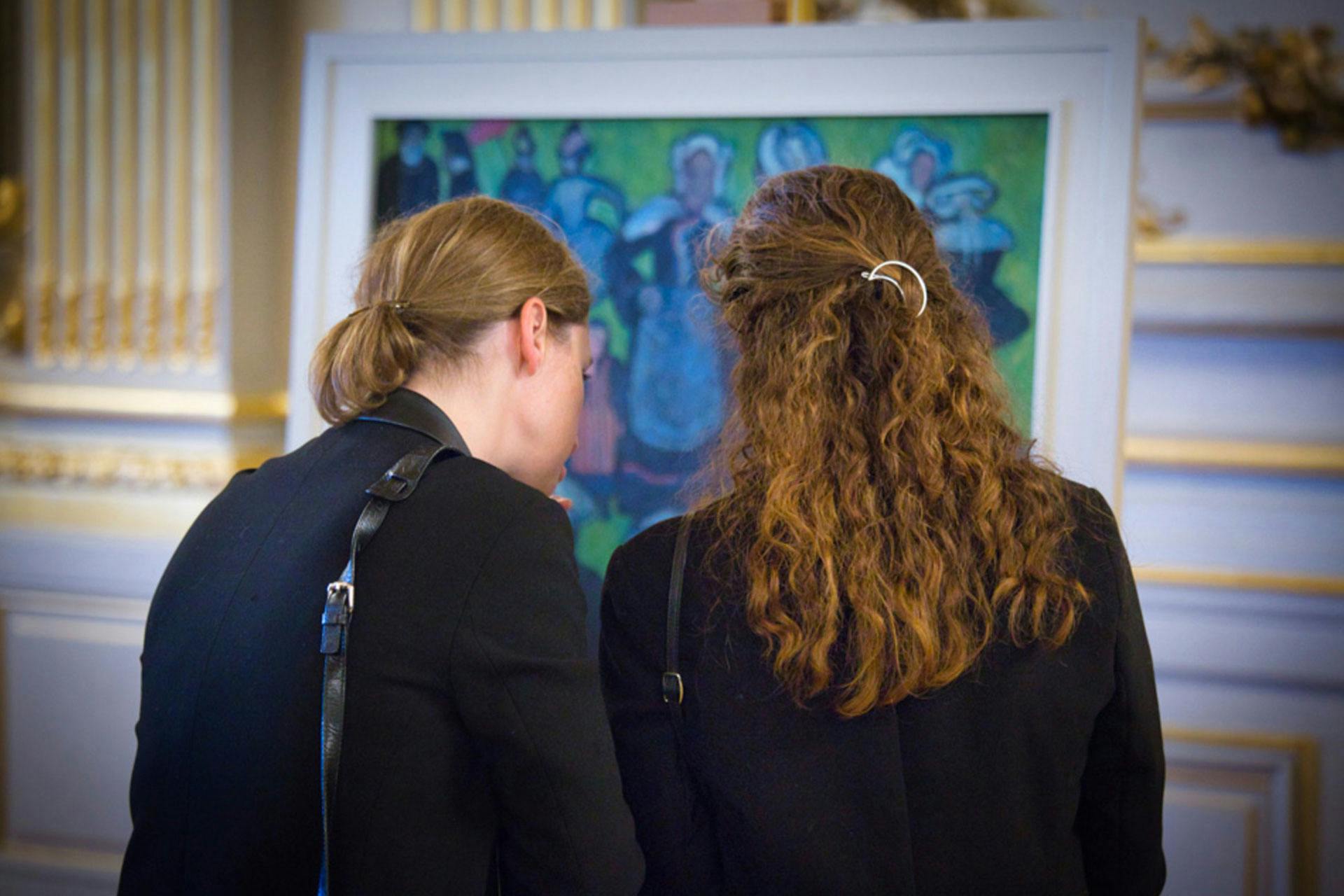
May 14, 2019
Le pardon, by Emile Bernard, a milestone in Art history
A work of major heritage interest, Le Pardon, also known as Les Bretonnes dans la prairie, by Emile Bernard has been added to the Musée d’Orsay collection, thanks to exclusive AXA sponsorship. A talk with Claire Bernardi, curator at the musée d’Orsay.
3 minutes
With its unprecedented formal audacity, this artwork, created in 1888 in Pont-Aven, heralded a new way of painting, breaking away from the artistic trends of the late 19th century, particularly Impressionism.

Why does this painting represent a milestone in art history? What is its artistic modernity based on? Claire Bernardi, Curator of paintings at the Musée d’Orsay and Curator of the exhibition Sérusier’s ‘Talisman’, a prophecy of color, answers our questions.
Why is this work by Emile Bernard regarded as the manifestation of a new style of painting?
Claire Bernardi: Because it represents a very important milestone in late nineteenth century paintings. It all began in the summer of 1888, when Emile Bernard went to Pont-Aven, Finistère, where he met Paul Gauguin. On September 16, they went together to the patronal festival of St. Joseph’s Church, which provided Emile Bernard with the inspiration for the subject of his painting Le Pardon, also known as Les Bretonnes dans la prairie. This painting was a response to Paul Gauguin’s Vision After the Sermon, which was started shortly beforehand. Realized side by side, these works moved away from impressionism, inaugurating a new style of painting that was later to become known as synthetism, arising from the dialogue between the two artists. This movement is characterized by an extreme simplification of forms, the rejection of perspective, the use of pure colors for flat surfaces and black outlines to enclose large patches, in a manner reminiscent of Japanese prints. Le Pardon also occupies a special place in Emile Bernard’s body of work, after which he returned to a more traditional style. The abstract and reconstructed vision of reality that he offered in this painting is emblematic of the art research under way during the 1888-1891 period. Personally, I am fascinated by the luminous intensity that emerges from this painting and the power of its palette, dominated by green that we find for example in the meadow. Emile Bernard also innovated in the way of representing the human figure, with distorted features and the use of very bold framing that had a strong impact on contemporary artists.
What is the artistic legacy of this work?
Claire Bernardi: Through its new radicalism, Le Pardon was immediately seen as a distinct work of art. Van Gogh, to whom Gauguin had shown this painting, made a watercolor copy in 1888, while the following year, it was exhibited at the Café des Arts in Paris. He had a considerable influence on the painters of the Nabis movement, one of whom, Maurice Denis, acquired Le Pardon in 1903 from the art dealer Ambroise Vollard. The painting was then exhibited several times with other major works of the period, such as Paul Sérusier’s The Talisman or Paul Gauguin’s Vision After the Sermon. It remained with Maurice Denis’s family until its recent acquisition for the Musée d’Orsay.
How will this painting fit into the Musée d’Orsay collection?
Claire Bernardi: Le Pardon is probably Emile Bernard’s most prestigious work. Thanks to AXA’s patronage, it has now been added to the Musée d’Orsay collection, which already has eighteen paintings by this artist. Among which, a number are related to his synthetic period, such as Madeleine in the Bois d’Amour and Breton Women with Umbrellas, but which do not have the same degree of radicality. Initially, Le Pardon will be exhibited alongside other works of Bernard, and also Sérusier and the Nabis. From September, it will occupy a prominent position in the new presentation of our permanent collections, in the Post-Impressionism section.


Related content

Philanthropy
read moreAXA and corporate responsibility
As an extension of our role as an insurer, which is to reduce risks and provide protection, for many years AXA has been committed to the preservation and safeguarding of our heritage, through a cultural philanthropy program in France, and also internationally.
For more than 10 years, AXA has been a partner of the Louvre Museum, and also a patron of MoMA in New York and Prado in Spain, to name just a few examples.
It is in this framework that in 2019 AXA is collaborating with the Musée d’Orsay for the first time, and has thus become its main private partner in the acquisition of Emile Bernard’s Le Pardon, also known as Les Bretonnes dans la prairie, a work of major heritage interest.
In addition to cultural philanthropy, AXA’s corporate responsibility can be seen in two other areas:
- Skills sponsorship, with the AXA Hearts in Action international volunteer program, which enables the Group’s employees to engage with partner associations;
- Scientific philanthropy, via the AXA Research Fund, which funds projects in the areas of environment, health, socio-economic risks and new technologies.



